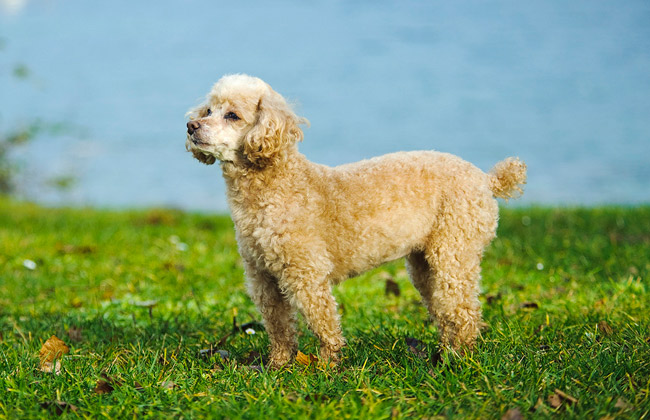Depending on what you ask, Poodle is considered one of the smartest dogs in the world, but is that what makes this dog so popular? This unique type includes three sizes: standard, small, and toy, and is a good choice for people with allergies. Read on to find out more about Poodles’ character, including their history, variety, love appearance, intelligence, and overall aggression.
Poodle History
Ask a lot of people, and they will tell you that the Poodle originated in France – this is probably because of the fragrant French Poodle cartoon images. However, according to the American Kennel Club (AKC), the species originated from Germany, where its purpose was to act as a water repellent. However, some disagree with this German claim of origin and believe that Poodle is organized in Denmark.
Poodle Heritage comes from Barbet, the French Water Dog, and the Hungarian Water Hound. Each of these types contributed to the “final product” we know today as Poodle. The love of all three species of water is in the Poodle, and many believe that this is why the species received its name – the bastardization of the German word for Pudel which translates to “one who dances in the water.”
What Were Born Poodles?
The Poodle had many functions throughout history. Hunters used the dog as a hunter to hunt waterfowl, as a shotgun dog, and even as a dog for truffles. Over time, however, the genius of this genre became apparent, and the French began to use Poodles as circus performers. Through this type of display as a trained and intelligent species, Poodle became very popular in France, and many began to call dogs as French Poodle.
The Poodle is known by AKC as a non-sports genre. Other organizations that officially recognize this type: Continental Kennel Club, Fédération Cynologique Internationale, American Kennel Club, United Kennel Club, Kennel Club of Great Britain, Australian National Kennel Council, National Kennel Club, New Zealand Kennel Club, America’s Pet Registry, American Canine Registry , American Dog Registry, and the North American Purebred Registry.
Types
In time, the Poodle genus began to take three different approaches. The first Standard Poodle began to deviate into a small dog while also maintaining its size; this resulted in three groups of Poodles. Three Types of Poodles are still known today as Standard Poodle, Miniature Poodle, and Toy Poodle. While weights vary between Poodle classes, it is the length that is most important in determining what Poodle is different.
Standard Poodle
The Standard Poodle was the first of its kind to produce Poodle, and is also known as Caniche, Barbone, Chien Canne, Grosse Pudel, and French Poodle. The Standard Poodle is medium to large, standing 15 inches or longer. It can weigh anywhere from 45 to 70 pounds, with women between 45 to 60 pounds and men up to 45 to 70 pounds.
Miniature Poodle
The Miniature Poodle or Mini Poodle must be between 15 and 15 inches high to be installed as this type. If the dog fails to do this requirement, it is considered a Toy or Standard Poodle. The Minature Poodle weighs between 15 to 17 pounds.
Toy Poodle
If the dog stands at a height of more than 10 inches above the shoulders, it cannot be a Toy Poodle and will be considered a Miniature Poodle. Toy
The Toy Poodle is currently the smallest of the Poodle brands known to the American Kennel Club. However, farmers are in the process of developing two more Poodle classrooms.
New Poodle Classes
Moyan Poodle
There are two other Poodle classes that AKC does not yet know. The Moyan Poodle (also known as the Klein Poodle or Medium Poodle) is between Miniature and Standard Poodle size. Sculptors are also working to create a small Poodle known as the Teacup Poodle. How big are Teacup Poodles? Teacup Poodles are one of the smallest dogs and can stand up to 9 inches in height and weigh up to 6 pounds.
Appearance
Gray Poodle sat
Poodle has a long and straight mouth with long ears dangling near the head. The dog’s tail may or may not stand. Poodle feet are usually very small.
Coat
The coat of this type is probably one of the defining characteristics. It is a single coat and has a cord or twisted. They also have a coat of hair, not wool.
Color
There is a big difference in the color of the Poodle coat. However, it should always be strong in color – however, some artisans are working to produce colorful Poodles that do not meet the standards of the show. The colors of the coat commonly seen in the Poodle are blue, black, gray, silver, apricot, cream, brown, white, red, and café-au-lait.
Clip
The Poodle is best known for its classic clip art. While many believe that this clip is attractive, it came from a different source. As a hunter and restorer, Poodle often found itself in the middle of the weather, and this prompted its captors to create a clip that would effectively protect the dog without hindering it. The clip shows hair on the legs; this is sufficient to prevent sharp edges from cutting the dog’s legs while controlling the game and also to help trap heat and prevent frostbite.
Does Poodles Pour?
Unlike other dogs that often shed, Poodle is not a shed; however, it requires constant preparation and pruning to keep a jacket healthy and affordable.
What are Hypoallergenic Poodles?
No. But, since Poodles are hairy, not fur, and are low sheds, they are called lowly dogs. While non-bulky or low-intensity dogs produce less hair around your home, no type of dog is truly hypoallergenic. Find out what other low-sheder dogs are.

